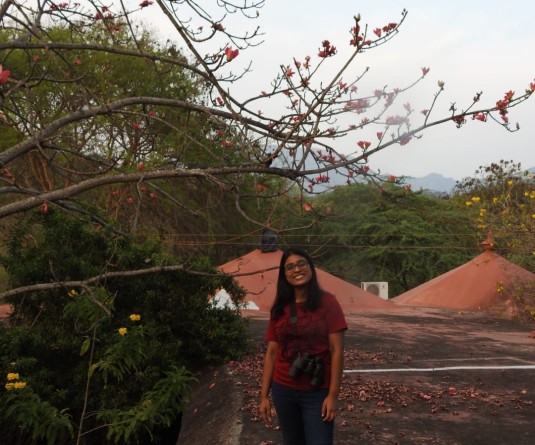
Cropping system is an important component of farming system. It represents cropping patterns used on a farm and their interactions with farm resources, farm enterprises and available technology which determine their make up. Cropping pattern is the proportion of area under various crops at a point of time in a unit area, it indicates the yearly sequence and spatial arrangement of crops and fallow in an area. Crop sequence and crop rotation are used synonymously. Crop rotation refers to recurrent succession of crops on the same piece of land either in a year or over a longer period of time. Component crops are chosen so that soil health is not impaired.
There are different types of cropping systems depending on the resources and technology available:
1. Monocropping – It refers to growing of only one crop on a piece of land year after year. It may be due to climatologically and socio economic conditions or due to the specialization of a farmer in growing a particular crop. Eg. Under rainfed conditions, groundnut or cotton or sorghum are grown year after year due to limitation of rainfall.
2. Multiple cropping – Growing two or more crops on the same piece of land in one year is known as multiple cropping. It is the intensification of cropping in time and space dimensions, i.e., more number of crops within a year and more number of crops on the same piece of land at any given period. It includes intercropping, mixed cropping and sequence cropping.
3. Sequence cropping – Sequence cropping can be defined as growing of two or more crops in sequence on the same piece of land in a year. Depending on the number of crops grown in a year, it is called double, triple and quadruple cropping involving two, three and four crops respectively. Relay cropping refers to planting of the succeeding crop before harvesting the preceding crop. Ratoon cropping or rationing refers to raising a crop with regrowth coming out of roots or stalks after harvest of the crop.
4. Intercropping – Intercropping is growing two or more crops simultaneously on the same piece of land with a definite row pattern. Eg. Maize + Soybean in 1:1 ratio i.e., one row of maize, one row of soybean. The population of intercrop is less than its recommended population in pure stand. Intercropping was originally practiced as an insurance against crop failure under rainfed conditions. At present the main objective of intercropping is higher productivity per unit area in addition to stability in production. Intercropping system utilizes resources efficiently and their productivity is increased. For successful intercropping, there are certain important requirements.
a) The time of peak nutrient demands of component crops should not overlap. Eg. In maize + greengram intercropping system, the peak nutrient demand period for greengram is around 35 days after sowing while for maize it is 50 days.
b) Competition for light among the component crops should be minimum.
c) There should be complementary between the component crops.
d) The differences in maturity of component crops should be atleast 30 days.
Efficient cropping systems
Efficient cropping systems for a particular farm depend on farm resources, farm enterprise and farm technology. The farm resources include land, labour, water, capital and infrastructure. When land is limited, intensive cropping is adopted to fully utilize available water and labour. When sufficient and cheap labour is available, vegetable crops can be included in the cropping system as they require more labour. Capital intensive crops like sugarcane, banana, turmeric etc., find a place in the cropping system when capital is not a constraint. In low rainfall regions (<750 mm/annum) monocropping is followed and when rainfall is more than 750 mm/annum, intercropping is practiced. Farm enterprises like dairying, poultry etc., also influence the type of cropping system. When the farm enterprise includes dairy, the cropping system should contain fodder crops as components. Change in the cropping system takes place with the development of technology.
Interactions between different component crops
When crops are grown in association as in intercropping, there is interaction between different component crops. This interaction may be competitive or non competitive or complementary when crops are grown in sequence, residual effect of the preceding crop influences the succeeding crop. This may be harmful or helpful. The toxic chemicals (allelopathic chemicals) left in the soil by the roots of sunflower crop inhibit germination of the succeeding crop. The stubbles of sorghum with high C:N ratio cause immobilization of nitrogen, thus causing nitrogen deficiency in early stages of the succeeding crop. The roots of legume crops and their residues add nitrogen to the soil.
Interactions in intercropping
Plants require growth factors such as solar radiation, water, nutrients and carbon dioxide for their growth. In intercropping or mixed cropping, different kinds of plants compete with one another for the limited growth factors.
a). Solar radiation – The taller crop in the intercropping systems intercepts most of the solar radiation while shorter component suffers. In some intercropping systems, solar radiation is utilized efficiently by both crops. In groundnut + redgram intercropping system, light interception is prolonged as redgram stars growing after the harvest of groundnut. If the component crops have different growth durations, the peak demand for light occurs at different times. In maize + greengram intercropping system, greengram flowers in 35 days after sowing and is harvested 65 days after sowing. Peak light demand for maize occurs at 60 days after sowing when greengram is ready for harvest. In such intercrops, there is less competition among component crops and higher solar radiation is intercepted in intercropping systems than in pure stands.
b). Water and nutrients – Competition for water and nutrients results in two main types of effects on the less successful or suppressed component. First, the roots dominated crop may grow less on the sides of aggressive component. The suppressed components adapt to such conditions by increased capacity for uptake. Also, if one part of the root system is on the depleted side, the remaining part shows compensatory activity and vigour. Secondly, plants affected by competition for soil factors are likely to have increased root/shoot ratio.
c). Allelopathy – Allelopathy is any direct or indirect harmful effect that one plant has on another through the release of chemical substances or toxins into the root environment. Some crops may be unsuitable to be grown as intercrops because they may produce and excrete toxins into the soil which are harmful to other components.
d). Annidation – Annidation refers to complementary interaction which occurs both in time and space. In annidation in space, the canopies of component crops may occupy different vertical layers with taller component tolerant to strong light and high evaporative demand and shorter component favouring shade and high relative humidity. Thus, one component crop helps the other. Multistoried cropping in coconut gardens, planting of shade trees in coffee, tea and cocoa plantations use this principle. Annidation in time refers to when two crops of widely varying duration are planted, their peak demands fro light and nutrients are likely to occur at different periods, thus reducing competition. When the early maturing crop is harvested, conditions become favourable for the late maturing crop. This has been observed to occur in sorghum + redgram, groundnut + redgram and maize + greengram intercropping systems.
e). Other complimentary effects – In an intercropping system, involving a legume and a non legume, part of the nitrogen fixed in the root nodule of the legume may become available to the non legume component. The presence of rhizosphere microflora and mycorrhiza on one species may lead to mobilization and greater availability of nutrients not only to the species concerned, but also to the associated species. Erect crop plants may improve the yield of a climber as in the case of coconut + pepper, maize + beans. The taller component acts as wind barrier protecting the short crop as in maize + groundnut, onion + castor and turmeric + castor.
Interactions in sequence cropping
Competition for light, water and nutrients as in mixed crop communities does not occur when sole crops are grown in sequence. It occurs in relay cropping where there is a short span of overlapping between two crops in a sequence and the relay crop experiences the shortage of light. The important purpose in sequential cropping is to increase the use of solar radiation. It is achieved by longer field duration and rapid ground coverage. Crops are raised one after another to keep the land occupied by the crop for longer period. In sequential cropping, the preceding crops has considerable influence on the succeeding crop mainly due to changes in soil conditions, presence of allelopathic chemicals, and shift in weeds and carry over effects of fertilizers, pests and diseases. Crops like sorghum and sunflower leave toxic chemicals in the soil which do not allow germination of subsequent crops. The previous leguminous crop leaves considerable amount of nitrogen fro the succeeding crop. Phosphorous applied to the previous crop is available fro the succeeding crop. The pests and diseases in crop stubbles and other residues of the previous crop may infect the subsequent crop.
Hannah K Asangla
SMS (Agronomy)
KVK Phek





